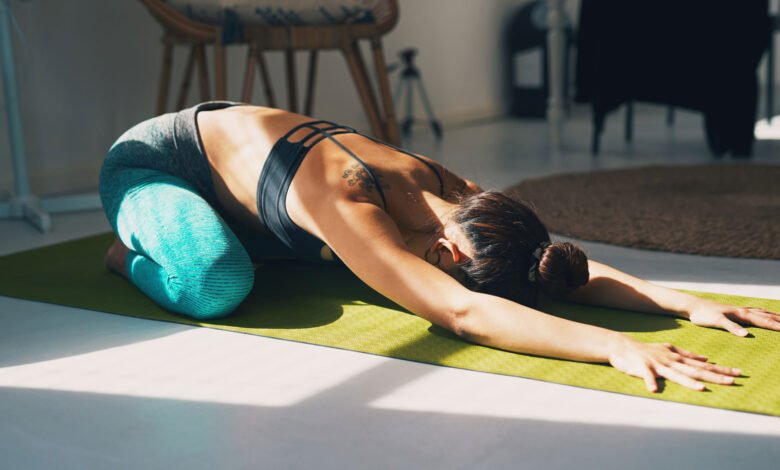
Sequencing a Hatha yoga class is an art that blends balance, mindfulness, and intention. Creating a thoughtful flow that transitions smoothly from one posture to another ensures a well-rounded experience for your students. Whether you’re a yoga teacher or simply looking to deepen your understanding of how to sequence a Hatha yoga class, following a structured approach is key to delivering an effective and enjoyable session.
In this guide, we’ll explore how to create a balanced Hatha yoga sequence, focusing on the elements of warm-up, core poses, and cool-down.
Understanding the Basics of Hatha Yoga Sequencing
Before diving into the specifics of how to sequence a Hatha yoga class, it’s essential to understand the core components of this practice. Hatha yoga typically emphasizes physical postures (asanas), breathwork (pranayama), and meditation. Unlike faster-paced styles like Vinyasa, Hatha focuses on holding poses for longer periods, allowing students to tune into their breath and body.
Key Elements of a Hatha Yoga Sequence:
- Breath Awareness (Pranayama)
- Warm-Up
- Standing Poses
- Seated and Supine Poses
- Relaxation (Savasana)
- Optional Meditation
Step 1: Start with Breath Awareness (Pranayama)
Begin your Hatha yoga class with breath awareness. This encourages your students to connect their minds and bodies while cultivating mindfulness. Simple breathing exercises like Dirga Pranayama (Three-Part Breath) or Ujjayi Pranayama (Ocean Breath) help set the tone for the class and prepare students for the physical practice ahead.
Step 2: Warm-Up the Body
A proper warm-up is vital to prevent injuries and ease the body into more intense postures. Incorporate gentle movements that awaken the muscles and joints, like Cat-Cow Pose (Marjaryasana-Bitilasana), Child’s Pose (Balasana), and gentle spinal twists. This stage should focus on preparing the spine, hips, and shoulders for more dynamic movements.
Step 3: Incorporate Standing Poses
After warming up, transition into standing poses that promote strength and stability. Focus on foundational postures like Mountain Pose (Tadasana) and Warrior I and II (Virabhadrasana I & II). These poses challenge balance, build strength in the legs, and engage the core.
To sequence these poses effectively, consider the following structure:
- Start with standing postures that flow easily from one to the next.
- Include poses like Triangle Pose (Trikonasana) and Extended Side Angle (Utthita Parsvakonasana) for lateral stretches and grounding energy.
Step 4: Balance Postures with Seated and Supine Poses
After the standing sequence, bring the energy down with seated and supine poses. These are perfect for stretching and calming the body, especially after the intensity of standing postures. Include poses like:
- Seated Forward Fold (Paschimottanasana)
- Bound Angle Pose (Baddha Konasana)
- Bridge Pose (Setu Bandhasana) to open the chest and spine.
Encourage students to focus on their breath in each pose, allowing deeper relaxation and awareness. These poses should restore balance and flexibility, ensuring the body is evenly worked and stretched.
Step 5: Savasana (Relaxation)
Every well-sequenced Hatha yoga class ends with Savasana (Corpse Pose), a pose dedicated to deep relaxation. This final resting pose helps students integrate their practice, calm their nervous system, and absorb the benefits of the class. Allow students to rest in Savasana for 5 to 10 minutes, guiding them through breathwork or a brief body scan.
Step 6: Optional Meditation
To complete the Hatha yoga sequence, you may introduce a short meditation after Savasana. Even a few minutes of mindfulness or seated meditation can enhance the sense of calm and clarity that yoga brings.
Tips for Sequencing a Hatha Yoga Class
- Build Gradually: Always start with simple movements and work your way toward more complex postures. This helps students build confidence and avoid injury.
- Focus on Transitions: Smooth transitions between poses are essential. Avoid abrupt changes that could break the flow of the class.
- Balance Postures: Ensure that you include a variety of poses that work on flexibility, strength, balance, and relaxation. Avoid overloading on one type of movement.
- Adapt for Different Levels: Offer modifications for beginners and advanced students. This ensures that everyone can participate and benefit from the class.
- End on a Calm Note: The final stages of the class should focus on relaxation and introspection, leaving students with a sense of peace.
Creating Themes for Hatha Yoga Sequences
One creative way to enhance your Hatha yoga class sequencing is by designing classes around a theme. Themes can help your students connect more deeply with the practice and offer a sense of unity throughout the class. For example:
- Chakra Balancing Sequence: Focus on poses that align with specific chakras, promoting energy flow through the body.
- Heart-Opening Sequence: Incorporate backbends and chest-opening poses to create an energizing, heart-focused class.
- Grounding Sequence: Use standing and seated postures to cultivate grounding and stability, helping students feel more connected to the earth.
Conclusion: How to Sequence a Hatha Yoga Class Effectively
Sequencing a Hatha yoga class requires careful planning, mindfulness, and a focus on the physical, mental, and spiritual well-being of your students. By structuring your class around gradual warm-ups, balanced postures, and deep relaxation, you create an experience that nurtures both body and mind. Whether you’re a seasoned yoga teacher or just starting your teaching journey, mastering the art of how to sequence a Hatha yoga class will elevate your classes and leave a lasting impact on your students.



